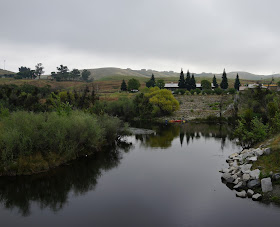Dale Matson
Click On Photographs To Enlarge
The day following my close encounter with a group of Bighorn
Sheep from the Langley Herd Unit, http://midsierramusing.blogspot.com/2016/04/the-endangered-sierra-nevada-bighorn.html
I had a chance to go out with Steve
Yeager, the man with more photographs of Sierra Nevada Bighorn Sheep than any other person. The CDFW uses a lot of his photographs. We headed up Pine Creek Road north of Bishop and did considerable
scouting beginning with the area just above the small community of Rovana.
These are the bighorn sheep from the Wheeler Ridge Unit.
This area along Pine Creek Road between Rovana and where the
road ends in a parking area/trailhead below the closed tungsten mine is where
sheep from the Wheeler Ridge Herd Unit can be observed during the winter. I had
been along this route on two previous occasions and was able to get photographs
both times although the sheep are usually high above the north side of the road.
I noticed more rock climbers parked along Pine Creek Road
this time. It was a cool morning and it didn’t take Steve long to locate some
sheep with his Swarovski binoculars. There were two adult ewes and two
juveniles walking up the bronze colored talus. Because their coats were white,
this rock color made them more visible. Most of the time the rocks are white
and it is even more difficult to find them unless you notice movement.
These sheep are much further away and essentially invisible
to the unaided eye. That is often the main problem with photographing bighorn
sheep from a distance. If you need binoculars and/or a spotting scope, even a
600mm camera lens will not give you an up close look at the sheep. I have
cropped these photographs to make the sheep appear larger. It is useful however
to see the real estate surrounding these sheep. The video slideshow I uploaded to
YouTube shows the sheep un-cropped using a 600mm lens. https://www.youtube.com/watch?v=1qJVVQcpFA4
We stayed there for a while and Dennis a professor at the
local community college; a Rovana local, stopped his truck to talk to Steve. He
has a huge telescope in his backyard and can scan the slopes for quite a
distance. I had to laugh at the three dogs inside the cab with him. Dennis and
Steve have “Sheep fever” and Dennis keeps daily records of sheep counts and
movement.
Eventually the sheep worked their way out of sight and we
went elsewhere. After scanning for about 1.5 additional hours and no further sightings, I had to leave
for home.
Wildlife photography sure takes more patience than landscape
photography. It always seems like the animals want to walk behind something that obscures your viewing them. The photographs were taken with a Sony A7R2 with an adapted Tamron
150-600mm lens. I have also included some mountain scenery from the same area
where I photographed the bighorn sheep.




































































